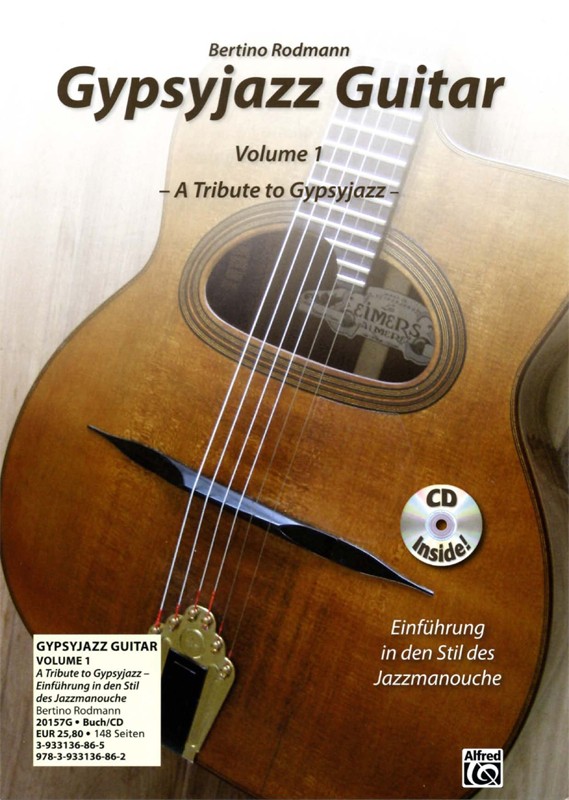How to improvise
How to improvise – Some thoughts on Improvisation (1/3)

Improvisation is a broad field that has been worked on by all kinds of musicians of all styles from the very beginning in many different ways. Django Reinhardt has been an absolute Master in this.
But how does Improvisation actually work?
There is improvisation with start- and stop-points, tonal and modal attempts of improvisation, there is improvisation based on scales and arpeggios or Improvisation just “spit out” as a wild and unordered bunch of tickled out notes.
Which way you may ever use as a musician, you should always have in mind this one clear goal: to transmit the expression of what you have to say as a musician to your audience. If there is no message – there is no meaning and improviation will degrade to “just a bunch of wiggled notes” that will also leave behind your audience icecold in the end.
It don´t mean a thing if it ain´t got that swing” – this golden rule was made up by great the Duke Ellington, and he was absolutely right! Because this is true for all kinds of music – not only for Swing or Jazz.
Wether what kind of musicstyle you play, if your music hasn´t got any message, no contents, no soul – then it is dead and meaningless. It will be unpersonal and – in the end it will be just boaring…

One can be able to play technically and maturely well or even play scales with a technically perfect sharp attack at the incredible speed of 400+ BPMs on any instrument, but if it has no soul it means – nothing!
To copy another musician (e.g. a musical idol) is not forbidden at all, but the more it is one of the most easiest ways to learn music from each other. Almost all great musicians did that as it is one of the most natural ways to learn for human beeings to imitate. So imitation belongs to a very important phase in the developement of every musician.
Nevertheless one day (whenever that is) there should arrive a new phase in the musical developement of every musician in which one should transform all the things that he/she might have learned from the musical forefathers or idols into own new phrases and musical ideas. If not one will stick inside the process of beeing blocked in his own advancement…
Like Jazzlegend Clarke Terry already said in 1954, there are four important steps in the phases of developement of a musician: Imitate, Assimilate, Create, Innovate
(How to Improvise – some thoughts on Improvisation by Bertino Rodmann ©2013)
Read more -> How to improvise (Part 2/3)
How to Improvise (2/3)
How to improvise (3/3)
ADVERTISING
 “Gypsyjazz Guitar – a tribute to Gypsyjazz“
“Gypsyjazz Guitar – a tribute to Gypsyjazz“
Gypsy-Jazz bzw. Jazz-Manouche ist der erste in Europa entstandene Jazzstil.
Seine Einflüsse kommen aus dem französischen Musette-Walzer, dem ungarischen Çsardas oder dem spanischen Flamenco, sowie der Sinti-Musik selbst, die von den Sinti-Musikern in Swing-Phrasierung interpretiert wurde.
Ziel des Buches: Nicht nur eine umfassende Gitarrenschule für Gypsy-Jazz Gitarre zu verfassen, die die rhythmischen und solistischen Aspekte der Gypsyjazz Gitarren-Spielweise vermittelt, sondern auch den Respekt gegenüber der uralten Tradition der Sinti.
Inhalt Teil 1: Rhythm Guitar: Comping, La Pompe-Rhythmus, Dead Notes, Gypsychords, Voicings, Blues-Kadenz, Chord Substitution
Inhalt Teil 2: Solo Guitar: Reststroke Picking, Arpeggio Picking, Sweptstroke Picking, Skalen, Arpeggien, Solo Licks
Verlag: Alfred Music Publishing GmbH; Auflage: 1 (15. Oktober 2011)
Sprachen: Deutsch / English ISBN-10: 3933136865 – ISBN-13: 978-3933136862
148 Seiten, mit Play-alongs und Noten & Tabulatur + Audio-CD Preis: 25,80
Erhältlich bei Amazon, Alfred Verlag oder www.bertino-guitarrist.com
Share this article:
